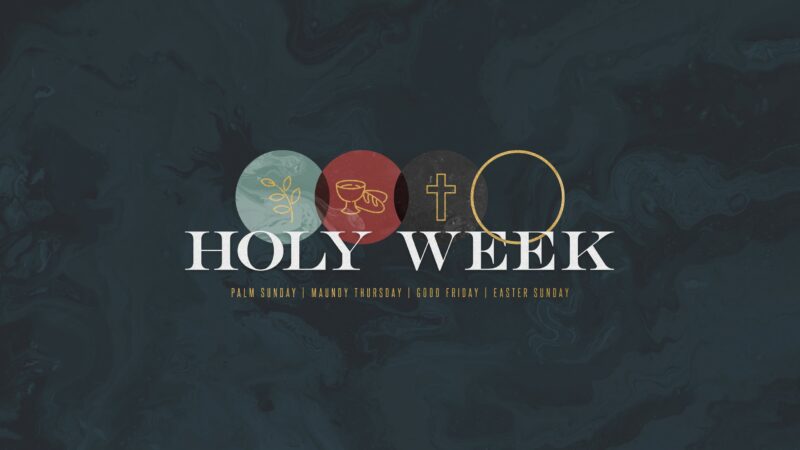
Day Two: Monday
Texts: (Matthew 21:12–22, Mark 11:12–19, Luke 19:45–48)
On Monday, one of the central themes is the question: “What kind of worship does God require from His people?” How is your worship lately? One of the first commandments in the Bible is for us to worship God. Remember the story of Cain and Abel? It was clear from the outset that one kind of worship was acceptable, and the other was not. Is your worship true and authentic? The kind that pleases God? Let’s take a look at Mark 11:12-19:
12 The next day as they were leaving Bethany, Jesus was hungry. 13 Seeing in the distance a fig tree in leaf, he went to find out if it had any fruit. When he reached it, he found nothing but leaves, because it was not the season for figs. 14 Then he said to the tree, “May no one ever eat fruit from you again.” And his disciples heard him say it.
15 On reaching Jerusalem, Jesus entered the temple courts and began driving out those who were buying and selling there. He overturned the tables of the money changers and the benches of those selling doves, 16 and would not allow anyone to carry merchandise through the temple courts. 17 And as he taught them, he said, “Is it not written: ‘My house will be called a house of prayer for all nations’? But you have made it ‘a den of robbers.’” 18 The chief priests and the teachers of the law heard this and began looking for a way to kill him, for they feared him, because the whole crowd was amazed at his teaching.
19 When evening came, Jesus and his disciples went out of the city. 20 In the morning, as they went along, they saw the fig tree withered from the roots. 21 Peter remembered and said to Jesus, “Rabbi, look! The fig tree you cursed has withered!”
Structurally, here we have two stories sandwiched together. Mark is famous for this: starting one story (v 12-14), stopping mid-stream to tell another story (v 15-18), then finally coming back to finish the first story (v19-20). It’s like two buns and a beef patty. This time it’s the story of the fig tree at the beginning and end, with the story of the temple cleansing in the middle – like a burger. This technique tells the readers that we are meant to connect the stories together. But how?
THE FIG TREE
In story number one, Jesus is hungry and he goes to a fig tree which has leaves on it. From a distance it looks like there could be fruit, but upon closer examination he finds there is none, so he curses it. We may see this as a strange story. And it is. Is Jesus hungry and cranky? No, we are missing the point. Old Testament prophets would often use creative visual aids to describe things, particularly when it came to God’s judgments, like object lessons. (For examples, see Isa 20:2-4, Jer 28:2-11) Therefore, as biblically literate readers we should ask – what is the fig tree symbolizing?
THE TEMPLE
The first century Jewish temple was really beautiful and big. It filled an incredible 35 acres of land. King Herod took Zerubbabel’s temple and made it into a masterpiece. He brought in the best architects in the world and oversaw a massive expansion. (Paid for with your tax dollars of course.) It was one of the largest construction projects of all time. It was an enormous undertaking of immense proportions. In terms of the quality of the craftsmanship, it was a gorgeous place to go worship God. (If interested, the UCLA school of architecture put together a digital reproduction of the temple here). It was incredible.
What is Jesus’ assessment of the temple? In short, he’s not impressed. He quotes Isaiah the prophet saying, “My house will be called a house of prayer for all nations.” (Isa 56:7) Then, he quotes the prophet Jeremiah saying they made it into a “den of robbers.” This doesn’t sound good, but what exactly does that mean? Is he referring to just the money-changers? The answer is yes and no, sure they were there to make a buck, but they are not the only people at fault. Notice Jesus drove out both the sellers and the buyers. The problem was the whole system. The problem was everyone. After all, robbers don’t do their robbing in the den. The den is the place where the robbers retreat to after they committed their crimes elsewhere. Thieves would hide in caves and such so as to be safe from being caught. The den is the hideout – the safe place of security or refuge. And that’s how everyone was treating the temple. They were all robbers, robbing God. They were robbing God of the worship that was due Him. Instead of a place to come and examine their hearts and lives in worship, the temple degenerated into this “safe place” where they could find refuge, like a den. People would go out and commit willful sin (lie, steal, commit adultery and even worship other gods etc.) knowing it was wrong, Then they thought, “Well, I’ll just run over to the temple to make the sacrifices ad everything would be OK.”
This is when all of Jesus’ frustration comes to a head. The entire system has become corrupt. It is barren. It is like a beautiful tree but with no fruit. New Testament scholar NT Wright said, “Jesus’ attitude to the temple was not “this institution needs reforming,” nor “the wrong people were running the place”… the time had come for God to judge the entire institution.”[1] Some people call this passage the “cleansing” of the temple. Actually Jesus is pronouncing judgment. It’s more like cursing the temple, just like the fig tree.
And, just as Jesus’ words cause the tree to wither up and die, the readers would say, “Ahhh…that’s what he just did at the temple too.” Jesus has spoken words of judgment. Its days are numbered. The leafy fig tree with no fruit is just like that beautiful temple which was magnificent on the outside, but on the inside it was actually barren. Sure, the temple gave off the impression that it was a place dedicated to God’s service, but upon closer examination it wasn’t. God had planted Israel like a vineyard. Jesus, the owner, came looking for and expecting fruit but there was none. This greatly displeased God. This is not the kind of worship He desires.
Worship is when we give God our best. God deserves first place. That’s what God wants from us. Nothing more, nothing less, nothing else.
Prayer: Lord, help me to bring you authentic worship. I want to please you on the inside, not just the outside. Help my life to be fruitful in obedience, a living sacrifice that is holy and pleasing in your sight.
Holy Week Devotionals:
- Day 1 – Palm Sunday
- Day 2 – Monday
- Day 3 – Tuesday
- Day 4 – Wednesday
- Day 5 – Maundy Thursday
- Day 6 – Good Friday
- Day 7 – Holy Saturday
- Day 8 – Resurrection Sunday
[1] N.T. Wright, Jesus and the Victory of God, 423.




